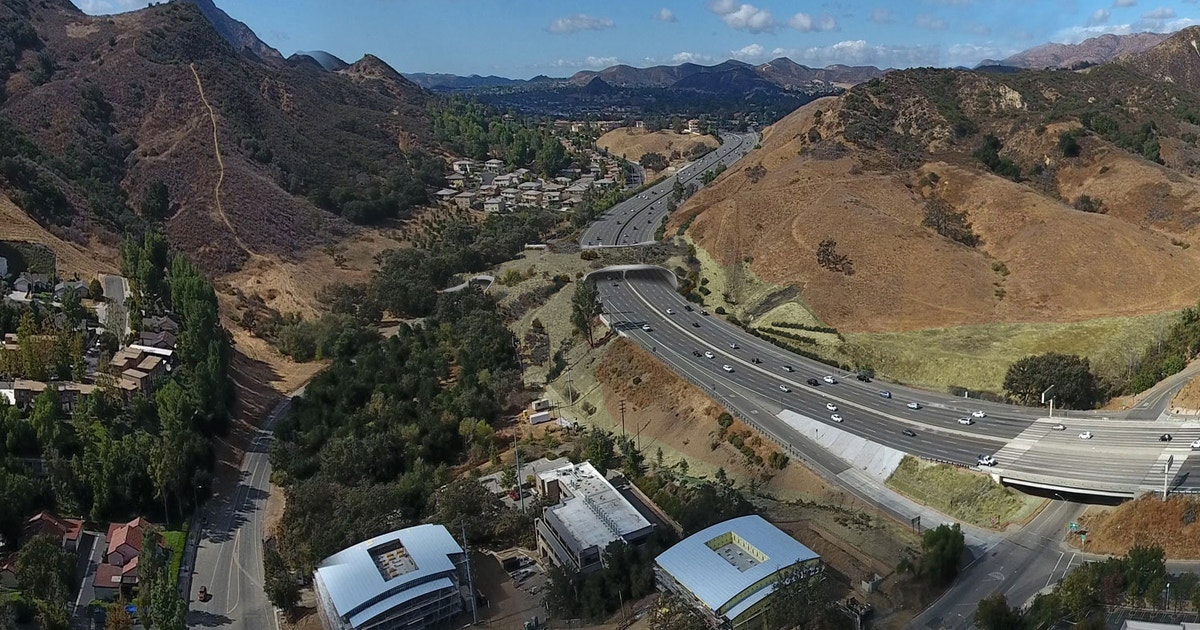Golden Eagles don’t seem likely to become roadkill: They spend their days soaring over the American West’s lightly populated sagebrush sea, not scurrying through traffic. Yet eagles often descend to scavenge carcasses along highways, where they may be struck by vehicles themselves, creating a roadkill feedback loop.
In five seasons of roadside surveys in Wyoming, Utah, and Oregon, researchers from HawkWatch International found 65 dead Golden Eagles and 14 Bald Eagles—surely a fraction of the true toll. “We’re dealing with many hundreds of Golden Eagles dying on roadways every winter,” says Steve Slater, HawkWatch International’s conservation science director.
Fortunately, the research suggests there’s a relatively straightforward way to protect eagles. In addition to counting victims, HawkWatch International crews set motion-activated cameras on carcasses of deer, elk, and other animals to see how raptors responded to traffic. The threat of passing cars, they found, compelled eagles to frequently flush off their carrion meals, burning valuable calories and swooping in front of oncoming vehicles as they took flight.
Dragging carcasses 40 feet from the highway, the 2022 study reported, could allow eagles to feast safely and in peace. Slater envisions teams patrolling collision hotspots and hauling carcasses from the danger zone—all funded by wind energy companies, which are required by law to compensate for raptors that their turbines kill. In Utah, crews are testing the concept along 120 miles of road, while Slater is collaborating with the U.S. Fish and Wildlife Service to develop a tool that would enable such a funding model.
Lugging carrion isn’t the only way to prevent vehicular deaths. The most proven solutions are wildlife crossings: dedicated bridges and underpasses, flanked by fences, that permit animals to traverse safely and also help reconnect habitats sundered by freeways. Crossings come in a vast array of designs and dimensions, from sweeping overpasses for grizzly bears to inconspicuous tunnels for salamanders, and the United States is about to get many more of them. The 2021 Infrastructure Investment and Jobs Act included $350 million to fund new animal passages, and states such as Colorado, New Mexico, and Washington have passed bills allocating additional money. A campaign called the Wildlife Crossing Fund aims to drum up another $500 million in private donations.
“Funding is the number one reason more states have not built wildlife crossings,” says Anna Wearn, director of government affairs at the Center for Large Landscape Conservation. “But now the pot is growing.”
While most crossings are aimed at helping mammals, birds may also benefit in surprising ways. For example, the Wallis Annenberg Wildlife Crossing, an immense land bridge currently under construction in California, will help mountain lions navigate over U.S. Highway 101. But in addition, its landscaping with native shrubs and chaparral is expected to enable Wrentits—low-flying birds whose population has become genetically fragmented by the freeway—to hopscotch above all of the traffic.
With the project slated for completion in 2025, big cats, tiny songbirds, and many species in between will soon more safely and freely mingle on both sides of one of America’s busiest freeways.
This story originally ran in the Fall 2023 issue as “Safe Passage.” To receive our print magazine, become a member by making a donation today.

